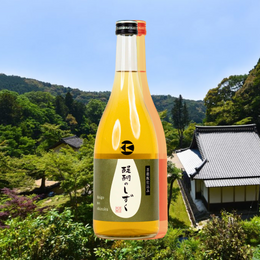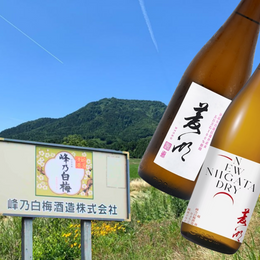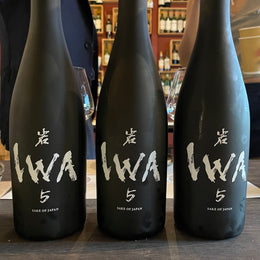Tasting Vietnam’s First Sakes - Mùa Classic, Mùa Passionfruit Cubeb, Mùa Pineapple Chilli Review

Ever had those moments when you’ve thought of something that, in hindsight, should’ve been a given, and wondered to yourself “huh, why didn’t we think of that sooner?"
That’s the sort of epiphany that I got when I came across Mùa Sake - a sake brand born out of a curiosity and passion to bring the spotlight towards Vietnam’s domestic products. Where there’s good rice, there’s good sake - case in point, the many prefectures that become powerhouses for both rice and sake production. Why not start a similar venture in Vietnam, where rice is intertwined to every facet of everyday life?

Vietnam is the 3rd biggest exporter of rice in 2022. Image Source: Mùa Craft Sake
The story of Mua begins in 2017 - at the Mùa Tra Que Restaurant in Hoi An. Mùa, the Vietnamese word for “seasons”, aims to serve modernised Vietnamese cuisine that best tells the story of its ingredients. Paying attention to seasonality and quality, every ingredient is sourced locally and nearby the restaurant - from vegetables, meat and seafood.


Souce: Mùa Tra Que Restaurant
As they say in Vietnam, all three meals consist of "rice and something else.” Naturally, someone would have the idea to bring sake brewing to Vietnam, lo and behold - with Lead Brewer Troy Kelly and Chef Tru Lang, we’ve got Vietnam’s first sakes.

Troy Keller (left) and Tru Lang (right).
Mùa Craft Sake is a three-way collaboration is three way between Heiwa Shuzo 平和酒造, craft brewery East West Brewing Co. and the Mùa Tra Que restaurant. Heiwa Shuzo has been a favourite amongst sake drinkers in Japan, with their KID Muryozan Junmai Ginjo bagging the International Wine Challenge (IWC) Champion Sake award out of over a thousand entries. Mùa Craft Sake had its first soft launch in November 2022.

If there’s anyone who has been to Vietnam and explored the nightlife, they’ll attest to the vibrant drinking culture there, commonly termed as “nhậu” - where friends and family congregate in big groups to have a relaxed, easy drinking session to catch up and make merry.

Beer is to go-to beverage for these “nhậu” gatherings in Vietnam. Source: tuoitre.vn
In a similar spirit, Mùa Craft Sake has opened up a taproom for their sakes - a place that seems to marry both izakaya and craft beer taproom culture into the same venue. The main standout feature is the many long tables and benches that encourage groups to huddle together and share a few glasses of sake together, as well as the usual suspects of craft beers, grilled skewers, and a generally informal culture.

Mùa Craft Sake has made its first Singapore debut at the Sake Matsuri 2023 (November edition), brought in by the folks from The Sake Company. You bet that when there’s new and exciting sake to try, we’ll run to get a taste of the good stuff.

Mùa Classic, 14% ABV – Review
Much of Mùa’s sakes follow that of typical sake making (with a few twists for the next few bottlings). The yeast and koji are cultivated and brought over from Japan, alongside an undisclosed japonica (native short grain rice from Japan) rice that is then cultivated in Vietnam, with local water is purified before being used in the sake.

The sake uses the sokujo method (where manufactured lactic acid is added to the starter), and is filtered and pasteurised. The recommended food pairings are cheese, grilled meats and deep fried foods.
Here’s the relevant stats for this sake:
| Alcohol: | 14% |
| Polishing: | 90% |
| SMV: | -8 |
| Acidity: | 2.0 |
| Best served: | Cold |

Nose: Somewhat light and delicate. There's multiple layers of fruit going on here, with the initial layer being that of apricots and honey nectarines, followed by a more acidic profile of lime and lime zest.
Palate: Feels rather light and dilute texture wise. There is more fruit coming through here, this time with flavours of kiwi and unripe guava - much more discernibly green.

Finish: Here, the fruit profile becomes more sweet again, resembling peach more. There is also a rice mochi sort of cereal sweetness as well. Here, the alcohol warmth is felt a lot more as well.
My Rating |
🧼⚙️A clean, yet complex and layered sake. Despite the light and delicate profile of the sake, there is always more to dig into - each time you drink and nose it, you get a different array of fruits and aromas. Not a boring sake by any means. |
Mùa Passionfruit Cubeb, 12% ABV – Review
Here’s where Mùa takes a bit of a twist to traditional sake making. Typically, sake only has rice as the base ingredient - here, passionfruit and cubeb pepper is added to the brew. The suggested food pairings for this sake is vanilla ice cream, fruits and white chocolate.

| Alcohol: | 12% |
| Polishing: | 90% |
| SMV: | -12 |
| Acidity: | 1.8 |
| Best served: | Cold |
Nose: Quite sweet and confectionery in general. I get cooked jujubes, dates, and a very strong, almost distillate like passionfruit aroma - the sort that you see in flavoured colas and sweets.
Palate: It reminds me of a blend of Heaven and Earth Passion Fruit Tea and Ice Lemon Tea, with that sweet tea profile but mixed with a flavouring of lemon and passionfruit. As the sake opens up a bit more, I get more rice flavours, predominantly steamed short grain rice. The acidity is lacking here, making the sake feel flabby and flat.

Finish: Mildly astringent, with that sweet tea bitterness that you get from Teh Botol or any bottled teas. The passion fruit still lingers on the palate, but more of the aromas and less of the fruit flavours.
My Rating |
🤏Hmm... I found this one a bit lacking. Not only were the passionfruit a bit artificial tasting and smelling for my liking, I found the lack of acidity a bit off balance compared to the sake as a whole. It gives me an "almost there" feeling. |
CT25 Mùa Pineapple Chilli, 8% ABV – Review
Outside of Japan, most of the “eating” rice within Asia is long grain rice - think Jasmine rice, basmati rice, etc. ST25 is the name given to a cultivar of rice grown in Sóc Trăng, winning the "Best Rice in World" in 2019, a competition organised by The Rice Trader.
![]()
ST25 Rice. Source: jccfood.vn
This is a historical win for Vietnam, as it is the first time a Vietnamese rice has won first place in the competition - with Thailand, Cambodia and USA often appearing at the top spot. The rice was assessed by a team of chefs, based on how it looked, smelled and tasted when cooked.
![]()
The rice was a project by Hồ Quang Cua, an agricultural engineer in Vietnam. He has been awarded the First Class Labor Medal by the Vietnamese government in 2011 and the title of Labor Hero in 2013. Source: gaost.vn
It’s rare to see long grain rice being used in sake, but Mùa has chosen to use this award winning tasty rice for the brew. They found that fermenting this particular cultivar yielded strong pineapple aromas.

Source: @muasake.vn
To honour the rice, Mua has started the CT25 series, the first being the Pineapple Chilli. A white stork con cò trắng is the mascot for the bottle, representing the humble Vietnamese farmer who tend to the rice fields.This sake, like the previous one, has some pineapple and chilli added to the brew.
| Alcohol: | 8% |
| Polishing: | 90% |
| SMV: | -25 |
| Acidity: | 2.5 |
| Best served: | Cold |

Nose: Pink fruit punch cordial jumps right out at you. As the aromas settle a little bit, I get a pink guava syrup first, followed by distinctively overripe pineapple - the sort where there is juice leaking at the seams of the pineapple. At the nose, there is a prickly chilli burn, though quite mild.
Palate: At first, a wash of pineapple juice, the canned stuff. After the initial burst of pineapple, you get the distinct plant like freshness and chilli burn of serrano chilli. While not overbearing, there is a noticeable burn on the palate. I personally enjoyed the chilli burn alongside the pineapple, but I think the spice could be a bit too intense for those adverse to spicy foods. Apart from the chilli, there is a herbaceous freshness from coriander leaves, though subtle.

Finish: The heat from the chilli lingers quite long even at the finish. The intensity diminishes slowly, still giving the freshness of raw green chilli on the palate. The pineapple flavours do not last too long here.
My Rating |
🔥💃A spicy sake?? Now that's a first for me. It's a fun beverage, which reminds me of a huge party with lots of snacks and tapas strewn all over. It's party time! |
Closing Thoughts:
I’m sure that the addition of other fruits and spices into a sake brew is bound to grind at some sake purists’ gears - but hey! At the end of the day, what matters is that we have a good drink to toast to. I personally feel that as long as brewers are responsible with their nomenclature and transparent about their production methods, a splash of creativity is what’s needed to push the boundaries of a category. I’m excited to see what new spins that Mùa will bring with their rice, being the Southeast Asia represent.

@vernoncelli







